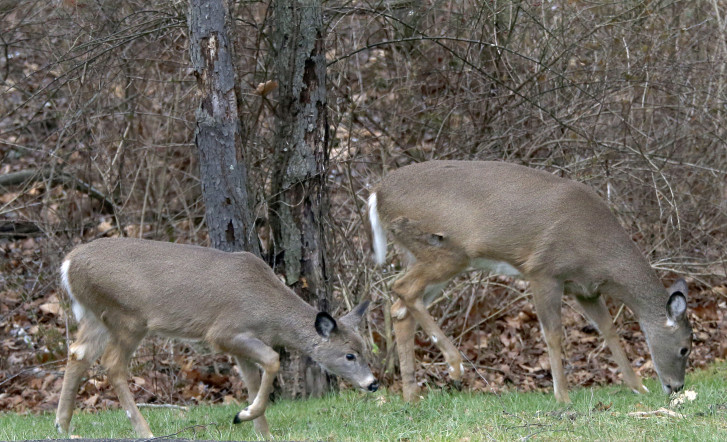Virginia seeks feedback on Deer Management Plan
The draft Deer Management Plan released by the Department of Game and Inland Fisheries this week is open for comment through July 10.

Deer Project Coordinator Nelson Lafon hopes to strike a balance between reducing damage caused by deer and providing recreational opportunities to see deer and to hunt them safely.
“It’s sort of like our constitution for our deer program in Virginia,” Lafon says. “White-tailed deer is the most popular big game species, but also a species the public has a lot of different kinds of interactions, both good and bad, with.”
The goals in the plan are centered on the size of the deer population, the amount of recreational opportunities for people to see or hunt deer, the amount of damage done by deer and the habitat available to the deer.
“Deer collisions with cars is a real biggie, particularly in the Northern Virginia area,” Lafon says. “Some of the highest incidence of collisions are in Northern Virginia.”
The plan calls for efforts to reduce the number of deer living on private property in Northern Virginia and many other parts of the state, while increasing the deer population living on public lands in the Shenandoah Valley and down the Interstate 81 corridor to the southwestern tip of Virginia.
It lists hunting as the preferred method to contain the deer population, except in areas where it is “inappropriate or unacceptable.”
One of the objectives in the draft is to maintain or enhance the use of hunting by boosting hunter recruitment programs and promoting programs that give deer hunting a positive image, such as giving the meat from deer hunts to food banks.
In places like Fairfax County, where the number of deer killed by hunters may not be the best measure of the population, the department proposes new ways to monitor the number of deer for better information about whether more needs to be done.
The plan says alternatives to hunting are often too expensive or impractical to control deer populations, so managing deer populations in urban areas like much of Northern Virginia will “remain a challenge” for the foreseeable future.
Fairfax County and some other more urban parts of the area mainly limit hunting to bows and arrows, while some police departments are also granted sharpshooting permits to reduce the deer population.
In areas where the goal may be to increase the deer population, the plan also calls for better monitoring of diseases, habitat issues and overhunting.
The plan recognizes that there have been many complaints in the past over deer management from groups opposed to hunts, groups that want to get rid of deer entirely or those with other opinions.
Lafon says the most useful public comments will be “values based.”
“We need to make sure that our goals, in particular, toward the end of the plan, really reflect what the people of Virginia want for their deer management resource, because, after all, the citizens are the ones that own deer,” he says.
The plan calls for greater public outreach to “increase stakeholder support and tolerance for deer population management, including the need for management and methods used.”
“The future of deer hunting will be affected significantly by public perception of deer hunters and deer hunting activities,” the draft states. “Therefore, guidelines, regulations, and education pertaining to deer hunting should address concerns for ethics and fair chase.”
The plan aims to reduce collisions between deer and vehicles by 30 percent by 2025, and to reduce agricultural and residential damage by 30 percent over the same period.
It also aims to quantify the overall damage caused by deer, and how much of that damage Virginians are willing to accept.
White-tailed deer were on the verge of being eliminated from Virginia around 1900 after overhunting, before rebounding thanks to protection laws and restocking.
The plan says the state switched in the early 1990s from a goal of restoring the deer population to goals of controlling and stabilizing it.
Lafon says the ten-year timeline of the plan makes the stakeholder meetings and other research more cost-effective, while also providing enough time to see the long-term impact of new policies.
There are still opportunities to modify the plan if needed.











No comments:
Post a Comment